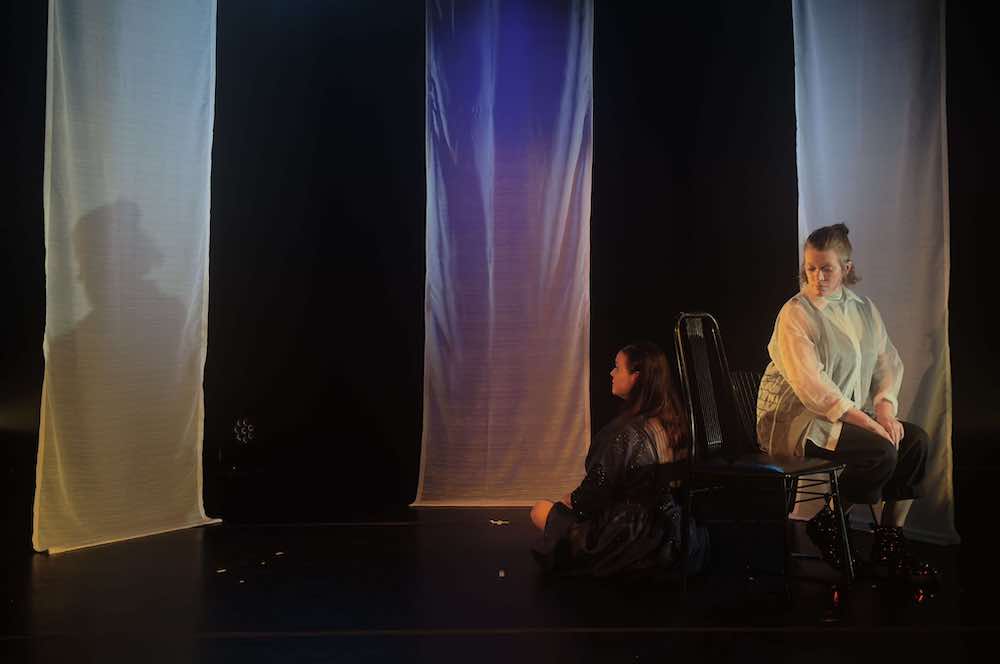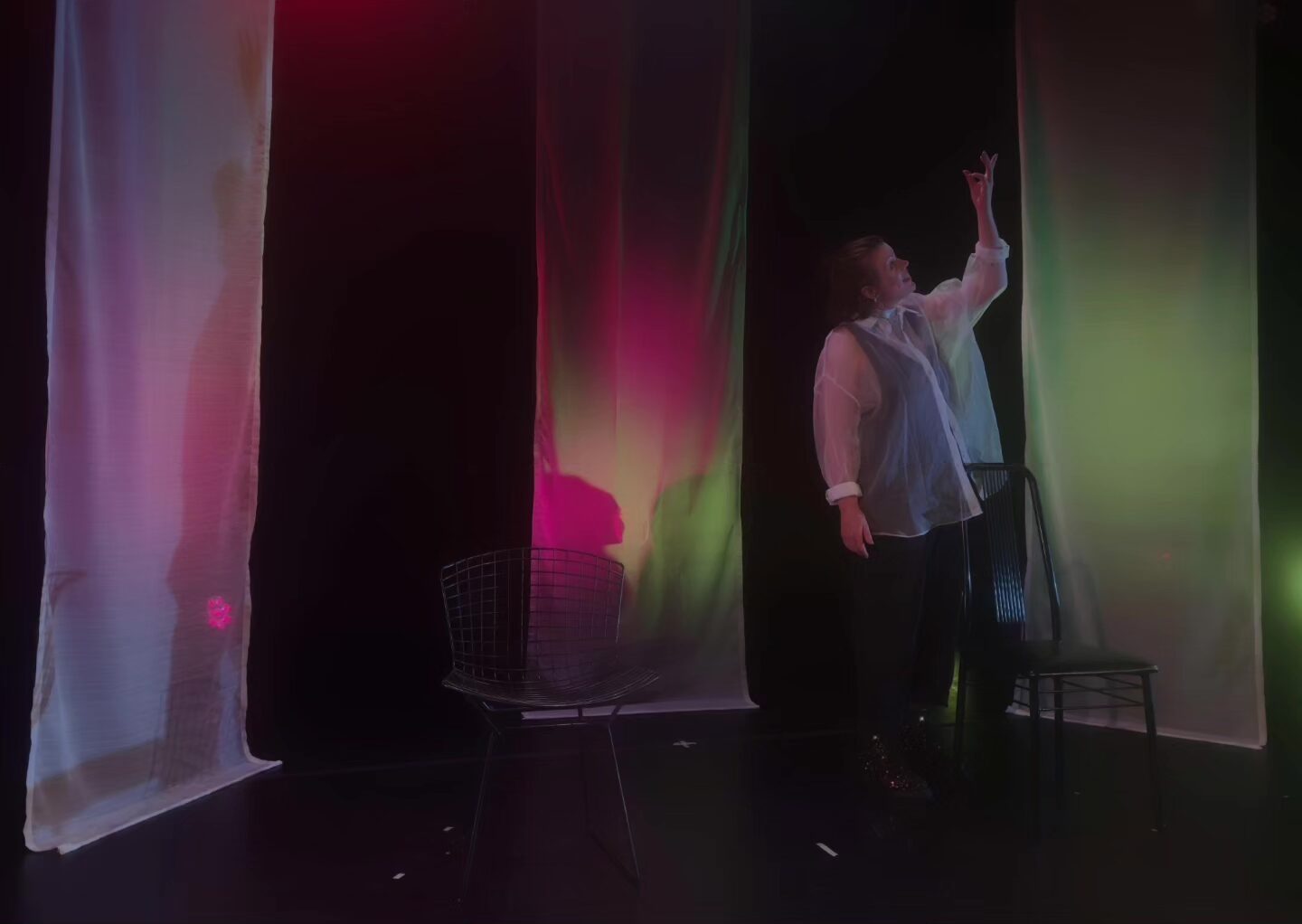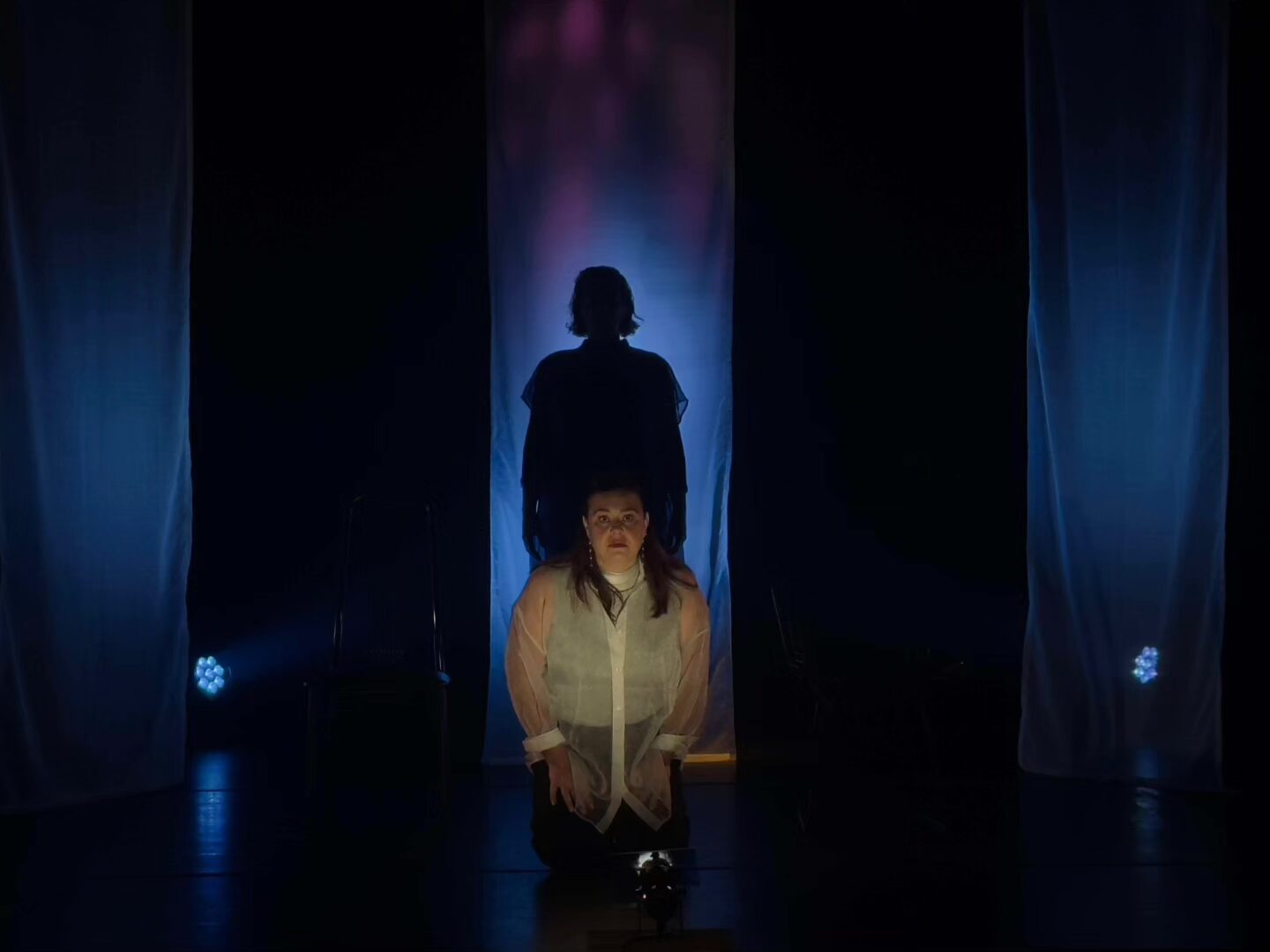La Maison des arts littéraire (MAL) will be performing their season opener with a first — a bilingual performance of La belle-mère / The Stepmother.
On May 17 the show will perform in French, and then in English on May 18. In an interview with Apt613, the Artistic Director of La Maison des arts littéraires, Lisanne Rheault-Leblanc, and performer Amélie Prévost, talk more about this piece, and bilingual theatre in the city.
Apt613: The Maison des arts littéraires has only been in the community for five years, beginning in 2020. Since beginning in such precarious times, how has this project transformed over the course of these five years?
Lisanne Rheault-Leblanc: It was a risky bet to start this project whilst the pandemic was going on, but the team had been working on the idea of the Maison des arts littéraires for some time. I think people needed that kind of glimmer of hope and playfulness in those darker and lonelier times. If I take a closer look to those last five years, I notice we are now flirting less with dramatic wide audience happening (outdoor displays like Ceci n’est pas une pub, outdoor installations like Loop, etc.) and more interested in shows and performances where the literary text is put into voice and action, though this path could possibly change again in the future! Fun fact: Amélie Prévost (author and performer of La belle-mère/The Stepmother) was on our first ever season with her show Fol ouvrage / Torcher des paillettes created with Elkahna Talbi. So we kind of came full circle with her coming back this year with a new show!

Scene from La belle-mère / The Stepmother. Photo provided.
Apt613: Lisanne, you are responsible for the programming and artistic direction of the Maison des arts littéraires. What kind of decisions do you take into consideration for each season?
Lisanne Rheault-Leblanc: There are three things I usually consider before selecting the seasonal program: What are the questions of society in the air at the moment and what are the artists interested in writing/performing about right now? With which artists do we want to work this year? And of course, what does the public of Maison des arts littéraires (MAL) want to see? So I try to make those three axes meet, while still offering something different, unexpected. I want MAL to be a part of a bigger conversation, and for that to bring to light local and national artists who have something to say about it: what are the hot questions right now and can we be together — artist and spectators — to dig deeper and try to see, think, imagine them differently? I want people to feel they’ve experienced something unusual but beautiful, that stays with them after.
Apt613: The performance of La belle-mère/The Stepmother is going to be a bilingual performance. Could you talk about the decision behind creating a space for bilingual theatre in Gatineau/Ottawa?
Lisanne Rheault-Leblanc: When Amélie reached out to pitch her new show, I realised there was also an English version of the text. With the reality of being in Canada’s capital region in mind, I discussed with my team the idea of presenting it in English too, and we decided to try it. We would not force it, but the occasion was right since at the core of the creation emerged the text in both languages. It is a premier for us, since the Outaouais Book Fair, born 46 years ago, has always programmed activities in French, and when Maison des arts littéraires was born, it just continued that way. I think this performance in English opens — for us and for the English-speaking audience in the region — interesting and bold new perspectives!

Scene from La belle-mère / The Stepmother. Photo provided.
Apt613: Amélie, La belle-mère/The Stepmother is about a figure who is usually presented in a wicked or negative light. What about this figure drew you to tell this story?
Amélie Prévost: Rachel [the other performer in this piece] and I are both stepmothers. We met professionally, but we quickly became friends through discussions about our respective family situations. We realized we had very few stepmothers around us, very few people with whom we could openly discuss the complexities of this role. We didn’t find many positive role models of stepmothers in popular culture. We both felt uncomfortable with the wicked stepmother archetype, which is so prevalent in fairy tales like Snow White and Cinderella. In these stories and many others, the stepmother is always presented as the antagonist, so we wanted to humanize her, to give her a voice. By discussing the challenges of this role, we are trying to rehabilitate, in a way, the stepmother, to offer a new archetype, a nuanced model that others could relate to. Our stepmother character is not perfect, but she is human, nuanced, and honest, despite the challenges she faces.
Apt613: The piece speaks to the ways that society sees the stepmother, and ultimately finding a way to silence the outside voices of who or what a stepmother should be. Is there a particular message you were hoping to share not only about stepmothers, but perhaps about the role some women play among different relationships?
Amélie Prévost: One of the first lines of the show is “It always begins with a love story.” We believe there’s only one way to become a stepmother, and that’s to fall in love with someone who already has one or more children. When you enter into this kind of relationship, you choose your partner, but not the children. You have to accept them as they are, with the values passed on by their mother and father, which may or may not be the same as your own. It’s extremely delicate to intervene in the education of a child who isn’t your own. You find yourself with a huge responsibility, but no rights. We also address, as delicately as possible, the difficulties encountered by the child, the mother and the father, but always from the stepmother’s point of view, because it is to her that we wanted to give a voice. The show is not just for stepmothers, but for everyone, because blended families are increasingly present and each member of these families—fathers, mothers, children, and stepparents—should be able to communicate healthily, for the good of all.

Scene from La belle-mère / The Stepmother. Photo provided.
Apt613: This piece will have a performance in English and French. Why was it important to share this piece in both languages?Is this something you hope to integrate with more performances in the future?
Amélie Prévost: The bilingual aspect of the work is not a goal but a consequence of the fact that we have two different working languages. To work together, we had no choice but to find a way to integrate bilingualism into the creation. In the show, there are two characters: the stepmother who tells her story and the blue voice, which represents both the stepmother’s unconscious, the voice of society, and the fairy godmother who would take care of her. This secondary character allows us both to play in the show. In French, I play the stepmother and Rachel the blue voice. In English, Rachel plays the stepmother and I play the blue voice. The other thing we like is that we can reach a wider audience.
Lisanne Rheault-Leblanc: If there is offer and demand, we will continue to explore this path for sure. We cannot ignore the specific context of the Ottawa-Gatineau region, which is that there are French-speaking and English-speaking persons living on both sides of the River. La belle-mère / The Stepmother is kind of a test for us in this view, and our decision to present it in Aylmer, where a lot of English-speaking audience in Gatineau is living, is no accident. We are already considering other inclusions, like for our Nuit blanche (October 3rd), we are in contact with Riverbed Reading Series to possibly include some English readings. (Hushhhh, nothing is confirmed yet 😉 )
La belle-mère/The Stepmother is performing at La Maison des arts littéraires on May 17 and 18. Make sure to get your tickets online. This interview has been edited for brevity and clarity.










